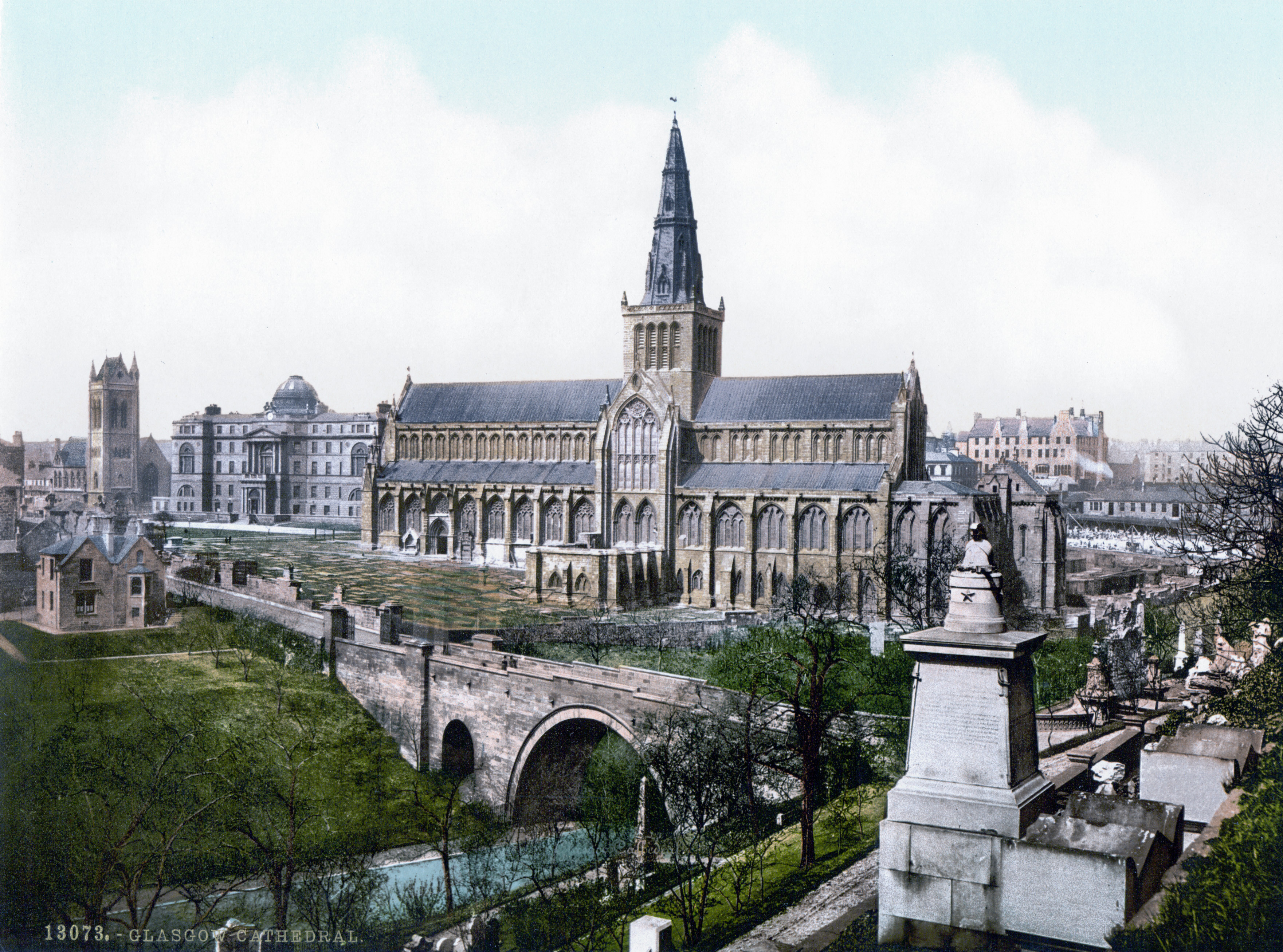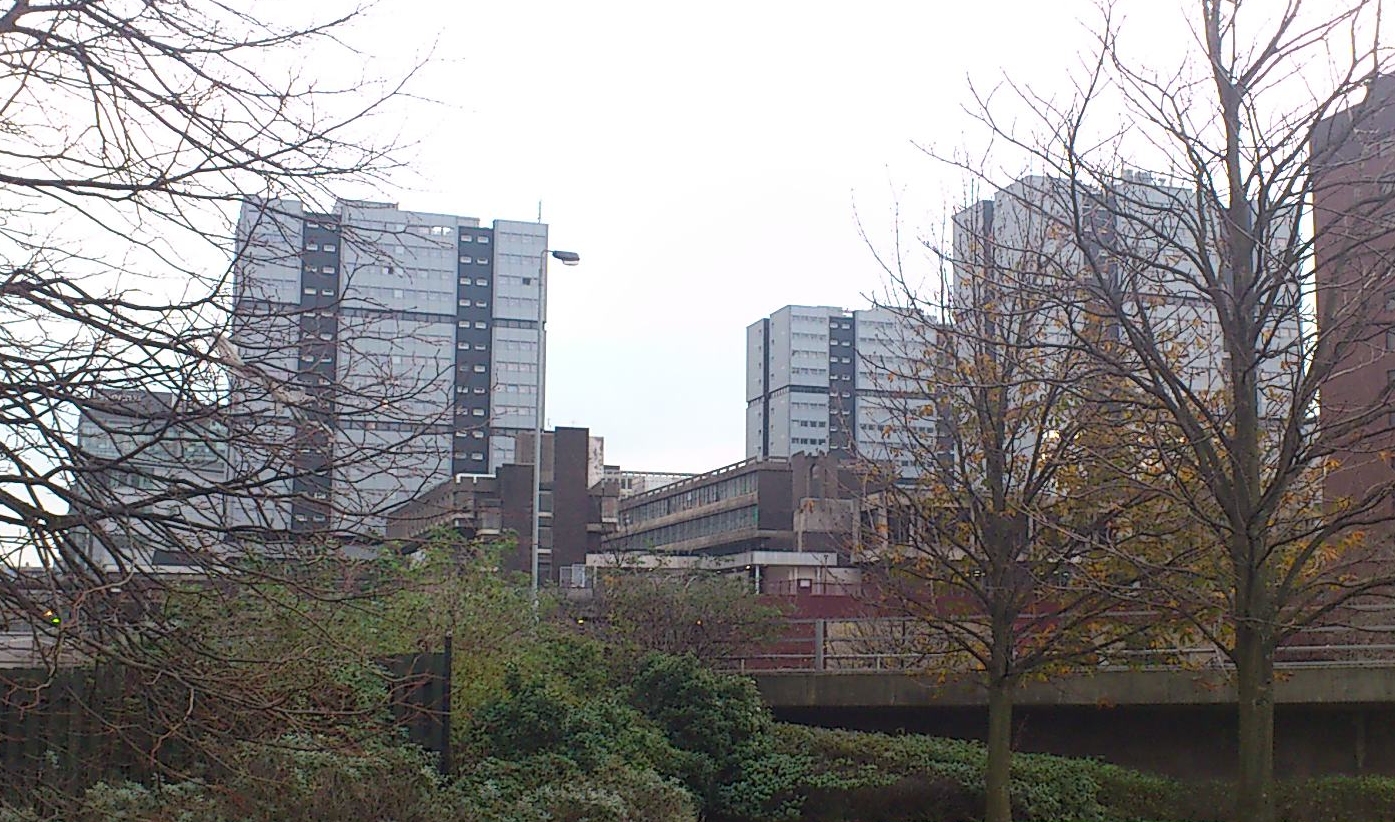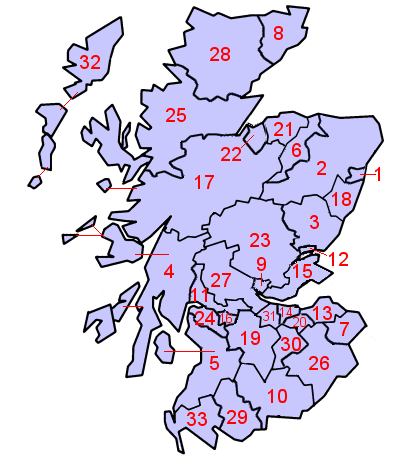|
Glasgow City Council
Glasgow City Council (Scottish Gaelic: ''Comhairle Baile Ghlaschu'') is the Local government in Scotland, local government authority for Glasgow, Glasgow City council area, Scotland. In its modern form it was created in 1996. Glasgow was formerly governed by a corporation, also known as the town council, from the granting of its first burgh charter in the 1170s until 1975. From 1975 until 1996 the city was governed by City of Glasgow (1975–1996), City of Glasgow District Council, a lower-tier authority within the Strathclyde region. Glasgow City Council has been under no overall control since 2017, being led by a Scottish National Party minority administration. The council has its headquarters at Glasgow City Chambers in George Square, completed in 1889. History Glasgow Corporation Glasgow was given its first burgh charter sometime between 1175 and 1178 by William the Lion. It was then run by "Glasgow Town Council", also known as "Glasgow Corporation", until 1975. The city ... [...More Info...] [...Related Items...] OR: [Wikipedia] [Google] [Baidu] |
Susan Aitken
Susan Aitken (born November 1971) is a Scottish politician who has served as Leader of Glasgow City Council since 2017. A member of the Scottish National Party, she has been the leader of the SNP group on the council since 2014 and a councillor for the Langside ward since 2012. Early life Aitken was born in Biggar, Lanarkshire in November 1971 to Glaswegian parents. After attending Biggar High School, she studied English Literature at the University of Glasgow before completing a Masters Degree at the neighbouring University of Strathclyde. Originally a member of Scottish Labour, she joined the SNP in 2000, while working as a researcher in the field of health and social policy. Political career Election to city council Aitken was elected to represent the ward of Langside in the 2012 Glasgow City Council election. In March 2014, she was made leader of the SNP Group at Glasgow City Council following the resignation of Graeme Hendry. She was re-elected as a councillor at the ... [...More Info...] [...Related Items...] OR: [Wikipedia] [Google] [Baidu] |
Coat Of Arms Of Glasgow
The coat of arms of Glasgow is the coat of arms belonging to Glasgow City Council, the local authority of Glasgow, Scotland. The coat of arms was first granted by the Lord Lyon King of Arms in 1866, and re-granted to the current city council in 1996. The design references several legends associated with Saint Mungo, the patron saint of Glasgow. History The Lord Lyon first granted a patent for a coat of arms for the city of Glasgow in 1866. Before this time, there were at least three official coats of arms in use. The first seal to use all the elements associated with the coat of arms was that of the Chapter of Glasgow, in use from 1488-1540, but they did not appear in something close to their present combination until 1647. Since it was first granted, various versions of the symbol have been in use. The current version of the coat of arms dates from April 1996, when it was granted following a local authority reshuffle. Symbolism The symbols appearing on the coat of arms ... [...More Info...] [...Related Items...] OR: [Wikipedia] [Google] [Baidu] |
Glasgow
Glasgow is the Cities of Scotland, most populous city in Scotland, located on the banks of the River Clyde in Strathclyde, west central Scotland. It is the List of cities in the United Kingdom, third-most-populous city in the United Kingdom and the 27th-most-populous city in Europe, and comprises Wards of Glasgow, 23 wards which represent the areas of the city within Glasgow City Council. Glasgow is a leading city in Scotland for finance, shopping, industry, culture and fashion, and was commonly referred to as the "second city of the British Empire" for much of the Victorian era, Victorian and Edwardian eras. In , it had an estimated population as a defined locality of . More than 1,000,000 people live in the Greater Glasgow contiguous urban area, while the wider Glasgow City Region is home to more than 1,800,000 people (its defined functional urban area total was almost the same in 2020), around a third of Scotland's population. The city has a population density of 3,562 p ... [...More Info...] [...Related Items...] OR: [Wikipedia] [Google] [Baidu] |
Gorbals
The Gorbals is an area in the city of Glasgow, Scotland, and former burgh, on the south bank of the River Clyde. By the late 19th century, it had become densely populated; rural migrants and immigrants were attracted by the new industries and employment opportunities of Glasgow. At its peak during the 1930s, the wider Gorbals district (which includes the directly adjoined localities of Laurieston and Hutchesontown) had swollen in population to an estimated 90,000 residents, giving the area a very high population density of around 40,000/km2. Redevelopment after the Second World War has taken many turns, and the area's population is substantially smaller in the 21st century. The wider Gorbals area was once home to 16 high-rise public housing apartment blocks built in the 1960s and 1970s; nowadays only six are still standing, with two more preparing for demolition around summer 2025. Meaning of placename The name is first documented in the 15th and 16th centuries as ''Gorbaldi ... [...More Info...] [...Related Items...] OR: [Wikipedia] [Google] [Baidu] |
Calton, Glasgow
Calton (, ), known locally as The Calton, is a district in Glasgow. It is situated north of the River Clyde, and just to the east of the city centre. Calton's most famous landmark is the Barras (market), Barras street market and the Barrowland Ballroom, one of Glasgow's principal musical venues. No official definition of Calton's boundaries exist, notionally it can be thought of as the roughly trapezoidal area bounded by the River Clyde to the south, Abercromby Street to the east (where it borders both Camlachie and Bridgeton, Glasgow, Bridgeton), and the City Union Line railway to the north and High Street, Glasgow, High Street/Saltmarket to the west. History The area was a Burgh of Barony from 1817 to 1846, when it was annexed to Glasgow. The lands of Blackfaulds, on which Calton now stands, originally formed part of the lands of the Archbishopric of Glasgow, but were annexed to The Crown in 1587. In 1705 the owner, John Walkinshaw, began to feu (land tenure), feu the land ... [...More Info...] [...Related Items...] OR: [Wikipedia] [Google] [Baidu] |
Anderston
Anderston (, ) is an area of Glasgow, Scotland. It is on the north bank of the River Clyde and forms the south western edge of the city centre. Established as a village of handloom weavers in the early 18th century, Anderston was an independent burgh of barony from 1824 until it was incorporated into the City of Glasgow in 1846. The district is served by Anderston railway station. It is bordered by Charing Cross to the north, Blythswood Hill to the east and Finnieston to the west. Foundation of Anderston The land on which the present day district of Anderston stands was once known as the Bishop's Forest. These lands, situated to the west of medieval Glasgow, were granted to the Bishop of Glasgow by King James II of Scotland in 1450. The lands of Stobcross, which occupied part of this area, were the property of the Anderson family from the mid-16th century, and here they built their mansion, Stobcross House. Tradition has it that the name came from a wooden cross or ‘stob� ... [...More Info...] [...Related Items...] OR: [Wikipedia] [Google] [Baidu] |
Blythswood Hill
Blythswood Hill, crowned by Blythswood Square, is an area of central Glasgow, Scotland. Its grid of streets extend from the length of the west side of Buchanan Street to Gordon Street and Bothwell Street, and to Charing Cross, Sauchiehall Street and Garnethill. Developed from 1800 onwards, its Georgian and Victorian architecture is a Conservation Area. It started as the "Magnificent New Town of Blythswood", becoming a part of the city-centre's business and social life.. Today, the area forms part of the city's commercial office district. History After the Reformation the vast Lands of Blythswood, extending west and north to the River Kelvin and south to the River Clyde, were owned by the Glasgow merchant family Elphinstone; one descendant George Elphinstone became an MP of the Scots Parliament. Through his daughter it changed to the Douglas-Campbell family during the 17th century. Archibald Campbell, whose son became Lord Blythswood, setting about feuing the lands to dev ... [...More Info...] [...Related Items...] OR: [Wikipedia] [Google] [Baidu] |
County Of City
County of city (or county of a city) was a term used for certain local government areas in Scotland between 1890 and 1975 which performed the functions of both a county council and the town council of a burgh and also served as their own judicial areas. There were four such areas, covering the cities of Aberdeen, Dundee, Edinburgh and Glasgow. Each area was governed by a city corporation (also known as a town council) and was administered independently of the surrounding county. The counties of cities were abolished by the Local Government (Scotland) Act 1973, and were replaced by regions and districts in 1975. Formation Scotland's counties (also called shires) were primarily areas for the administration of justice via a sheriff. They gradually also gained local government functions, notably following the creation of Commissioners of Supply for each county in 1667. Local government functions transferred to elected county councils in 1890 under the Local Government (Scotland) Act ... [...More Info...] [...Related Items...] OR: [Wikipedia] [Google] [Baidu] |
Local Government (Scotland) Act 1889
The Local Government (Scotland) Act 1889 ( 52 & 53 Vict. c. 50) is an act of the Parliament of the United Kingdom which was passed on 26 August 1889. The main effect of the act was to establish elected county councils in Scotland. In this it followed the pattern introduced in England and Wales by the Local Government Act 1888 ( 51 & 52 Vict. c. 41). County councils The act provided that a county council should be established in each county, consisting of elected councillors. The term "county" was defined as excluding any royal burgh or parliamentary burgh, but with provisions that the county council would have powers over such burghs which met certain criteria, principally being those burghs which had fewer than 7,000 people at the time of the 1881 census. The burghs which remained independent of county council control were not listed in the act, but it was subsequently determined that there were 26 such burghs: *Aberdeen * Airdrie *Arbroath * Ayr *Brechin *Dumbarton *Dumfries ... [...More Info...] [...Related Items...] OR: [Wikipedia] [Google] [Baidu] |
Sheriffdom
A sheriffdom is a judicial district in Scotland, led by a sheriff principal. Since 1 January 1975, there have been six sheriffdoms. Each sheriffdom is divided into a series of sheriff court districts, and each sheriff court is presided over by a resident or floating sheriff (a legally qualified judge). Sheriffs principal and resident or floating sheriffs are all members of the judiciary of Scotland. History Before 1975 Sheriffdoms were originally identical to the shires of Scotland, originating in the twelfth century. Until the eighteenth century the office of sheriff was often hereditary, but this was ended following the unsuccessful Jacobite Rising of 1745. The Heritable Jurisdictions (Scotland) Act 1746 (20 Geo. 2. c. 43) revested the government of the shires in the Crown, compensating those office holders who were displaced. The Sheriffs (Scotland) Act 1747 (21 Geo. 2. c. 19) reduced the office of sheriff principal to a largely ceremonial one, with a sheriff depute or sheriff ... [...More Info...] [...Related Items...] OR: [Wikipedia] [Google] [Baidu] |
Lieutenancy Areas Of Scotland
The lieutenancy areas of Scotland are the areas used for the ceremonial lord-lieutenants, the British monarch, monarch's representatives, in Scotland. The lord-lieutenants' titles chosen by the British monarch, monarch and his legal advisers are mainly based on placenames of the traditional counties of Scotland. In 1794, permanent lieutenancies were established by Warrant (law), Royal Warrant. By the Militia Act 1797 (37 Geo.3, C.103), the lieutenants appointed "for the Counties, Stewartries, Cities, and Places" were given powers to raise and command County Militia Units. While in their lieutenancies, lord lieutenants are among the few individuals in Scotland officially permitted to fly Royal Banner of Scotland, a banner of the Royal Arms of Scotland, the "Lion Rampant" as it is more commonly known. Lieutenancy areas are different from the current local government of Scotland, local government council areas and their committee areas. They also differ from other subdivisions of Sc ... [...More Info...] [...Related Items...] OR: [Wikipedia] [Google] [Baidu] |
Lanarkshire
Lanarkshire, also called the County of Lanark (; ), is a Counties of Scotland, historic county, Lieutenancy areas of Scotland, lieutenancy area and registration county in the Central Lowlands and Southern Uplands of Scotland. The county is no longer used for local government purposes, but gives its name to the two modern council areas of North Lanarkshire and South Lanarkshire. The county was established as a shire (the area controlled by a sheriff principal, sheriff) in the twelfth century, covering most of the basin of the River Clyde. The area was sometimes known as Clydesdale. In the early fifteenth century the western part of the shire was removed to become Renfrewshire (historic), Renfrewshire. The historic county of Lanarkshire includes Glasgow, but the city had a separate lieutenancy areas of Scotland, lieutenancy from 1893. A Lanarkshire County Council existed from 1890 until 1975, which was based in Glasgow until 1964 when it moved to Hamilton, South Lanarkshire, Hamil ... [...More Info...] [...Related Items...] OR: [Wikipedia] [Google] [Baidu] |






